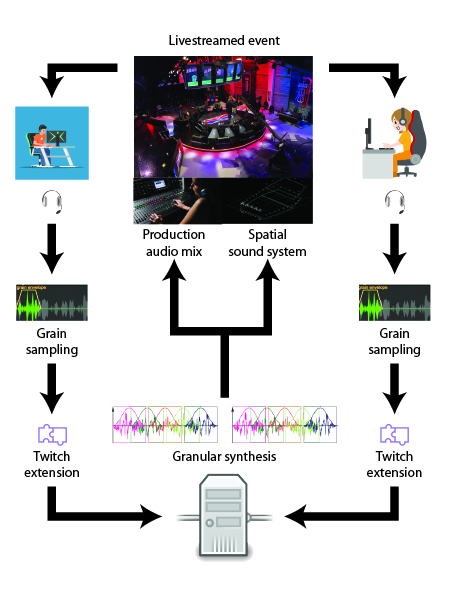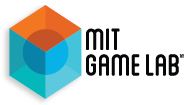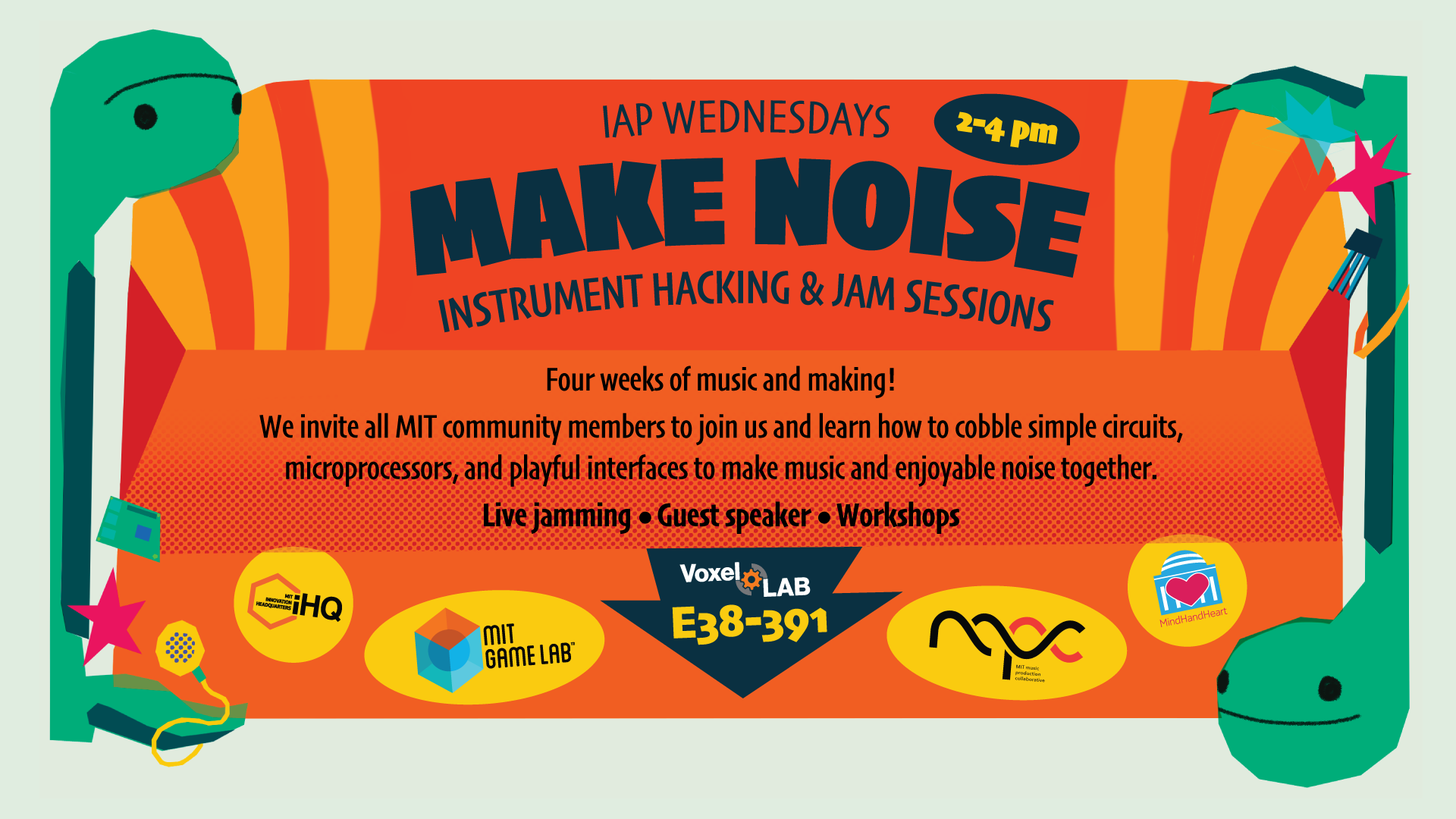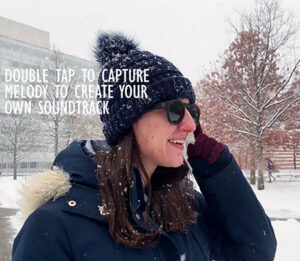Playful Audio
 Playful communal audio experiences
Playful communal audio experiences
The MIT Game Lab explores audio media and experiences to prototype and discover new playful experiences for groups and communities. We build on decades of best practices from live PA and high-fidelity reproduction and combine it with current advances in spatial sound and interactive sound generation. We imagine playful environments where the sonic experience is paramount, while taking advantage of visual, narrative, performance, and computational arts to create a coherent and engaging work.
This research builds on more than a decade of interactive audio experimentation from the very earliest days of the lab. Single-player and multiplayer game prototypes helped build familiarity with new interactive audio technologies as they became feasible.
Make Noise 2025
Instrument Hacking & Jam Sessions
MIT community members are invited to learn how to cobble simple circuits, microprocessors, and playful interfaces to make music and enjoyable noise together. Participants gathered every Wednesday of IAP to learn, troubleshoot, and jam together with prototype instruments. No prior experience with circuits or musical instruments was required.
The Make Noise Jam IAP series is a musical hackathon sponsored by the MindHandHeart Chancellor’s Innovation Fund and run in collaboration with the MIT Game Lab, the MIT Voxel Lab (iHQ), and the MIT Music Production Collaborative.
CrowdRoar
 During the COVID-19 pandemic, many performers and competitive events were challenged to recreate the live-audience experience in broadcast and live-streaming events. CrowdRoar is an experimental project of the MIT Spatial Sound Lab to combine audience engagement over the Internet with an immersive sound system to generate the roar of a crowd for live-streaming performers and competitors.
During the COVID-19 pandemic, many performers and competitive events were challenged to recreate the live-audience experience in broadcast and live-streaming events. CrowdRoar is an experimental project of the MIT Spatial Sound Lab to combine audience engagement over the Internet with an immersive sound system to generate the roar of a crowd for live-streaming performers and competitors.
The proof-of-concept technology demo captures short samples of microphone input from online viewers in real-time, protecting their individual privacy using granular synthesis to produce a multichannel mix. This produces the cumulative crowd noise from opt-in viewers, allowing artists and athletes to hear the energy of audience reacting to their performance. Reactions are slightly delayed but are an authentic reflection of how actual spectators feel about the events unfolding on a livestream.
This project is supported by a seed grant by the MIT.nano Immersion Lab Gaming Program, a four-year collaboration between MIT.nano and NCSOFT Corporation, a video game development company based in South Korea.
Courses
Lab researcher Philip Tan has investigated the history and developments of DJ technology and techniques. Rooted in the media studies concepts of remix culture and vernacular theory, our lab shares its insight and perspective on the innovations of DJs across time and around the world through public talks and MIT courses, highlighting the groundbreaking contributions of black, latine, and LGBTQ+ people to the art of DJing.
IAP 2019 Discotheque: Music & Technology
IAP 2020 DJ History and Technology
IAP 2021 DJ History, Technique, and Technology
IAP 2022 CMS.S61/S97 DJ Culture & Performance
Spring 2023 CMS.S63/S98 DJ History, Technology, and Technique
Spring 2024 CMS.303/803 DJ History, Technology, and Technique
Fall 2024 CMS.303/803 DJ History, Technology, and Technique
Spring 2025 CMS.303/803/21M.365 DJ History, Technology, and Technique
PARADE
In 2019, Dr. Mikael Jakobssen and Philip Tan worked with researchers at Bose Corporation to design and teach CMS.S63 Playful Augmented Reality Audio Design Exploration. This involved students prototyping and demonstrating a range of interactive experiences using new developments in interactive wearable audio technology. The entire syllabus is now available on MIT OpenCourseWare, with sample videos of lectures and student projects.
Collaborations
Philip Tan has also collaborated and performed for other public events and MIT classes run by the Cambridge Science Festival, MIT Music & Theater Arts, MIT.nano Immersion Lab, MIT Spatial Sound Lab, MIT Open Space Programming, MIT InnovationHQ, and the MIT Museum.
21M.295 American Popular Music
21A.505J The Anthropology of Sound
21M.470/21M.517 MIT Laptop Ensemble
2.009 Product Engineering Processes
MIT Sounding Series – the wave function collapses


